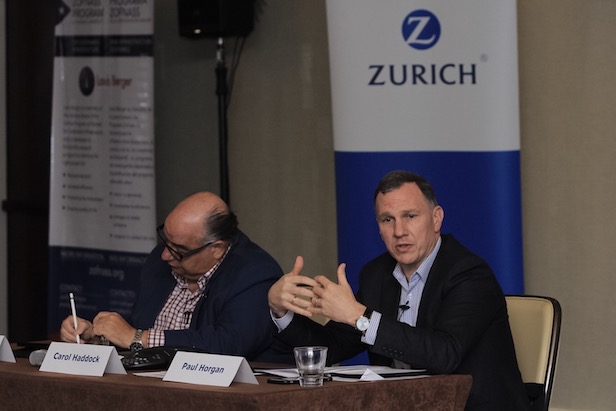
Seven months after Hurricane Maria devastated Puerto Rico inSeptember 2017, the island continues to face challenges in therecovery and rebuilding process.
|Last week, a multidisciplinary group met in the commonwealth'scapital of San Juan to evaluate what is needed to rebuild PuertoRico's infrastructure and what new ideas can translate to thelarger issues of rebuilding infrastructure across the UnitedStates.
|Zurich Insurance hosted the roundtable group whose membersrepresent engineering, sustainability, private investment,government, construction and urban planners.
|Related: After worst hurricane season ever, 2018 will beabove average
|Paul Horgan, head of North America Commercial Insurance forZurich North America and the moderator of the event, explainedthat Puerto Rican infrastructure is an example of what is happeningacross the country due to a lack of infrastructure investment tocreate more resilient power systems, bridges, roads and watersystems.
|“Our objective is to facilitate a conversation on the complexset of challenges in Puerto Rico with an emphasis on rebuilding toa standard that can better sustain major catastrophes in the future,” Horgansaid.
|Bad for business
Horgan also focused on the ways deteriorating infrastructure ishurting U.S. businesses.
|In 2017, the American Society of Civil Engineers gave U.S.infrastructure an overall rating of D+ for the condition of thenation's roads, bridges, dams, ports and other vital areas. Theyestimated that by 2020, “aging and unreliable” infrastructure willcost American businesses $1.2 trillion.
|For example, U.S. businesses spend an extra $27 billion annuallyin additional freight costs due to poor conditions of roads andother surface transportation infrastructure, according toZurich.
|Last week, Zurich released its paper on Rebuilding Infrastructure: The Need for Sustainable andResilient Solutions, arguing for the need for sustainableplanning and resilient building at a time when severe weatherevents are increasing in severity and frequency.
|“In the aftermath of a disaster, there is rarely the time tothink beyond recovery,” the paper states. “When in reality weshould be taking the time — in advance — to make sure the lightswill stay on when the next disaster strikes.”
|Related: What we've learned from Hurricanes Harvey,Maria and Irma
|In May, Zurich will sponsor InfrastructureWeek, convening organizations and people from across thecountry to highlight the issue of aging infrastructure and toencourage policymakers to invest in the projects, technologies, andpolicies Zurich professionals say are necessary to make the U.S.competitive, prosperous and safe.
|“The insurance industry has a key role to play in seekingsolutions for rebuilding infrastructure,” Horgan said. “We won't beable to truly improve the infrastructure in Puerto Rico and in theUnited States overall unless we encourage collaboration between allstakeholders and continue to hold conversations like we are havingtoday.”
|Check out the video below from Zurich for more on the challengesof rebuilding Puerto Rico and its infrastructure.
(Video: Zurich Insurance)
Want to continue reading?
Become a Free PropertyCasualty360 Digital Reader
Your access to unlimited PropertyCasualty360 content isn’t changing.
Once you are an ALM digital member, you’ll receive:
- All PropertyCasualty360.com news coverage, best practices, and in-depth analysis.
- Educational webcasts, resources from industry leaders, and informative newsletters.
- Other award-winning websites including BenefitsPRO.com and ThinkAdvisor.com.
Already have an account? Sign In
© 2024 ALM Global, LLC, All Rights Reserved. Request academic re-use from www.copyright.com. All other uses, submit a request to [email protected]. For more information visit Asset & Logo Licensing.








